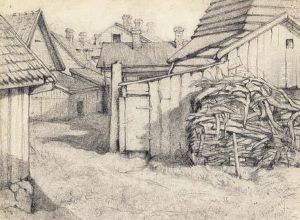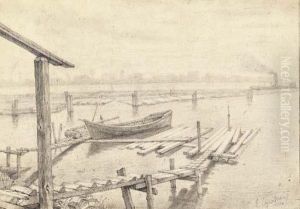Isaak Izrailevitch Brodskii Paintings
Isaak Izrailevitch Brodskii was a prominent Soviet painter and art administrator, born on January 6, 1884, in Sofiyevka, now part of Ukraine. He was a key figure in the Soviet art establishment and is best known for his role in developing the Socialist Realism style, which became the official art movement of the Soviet Union.
Brodskii showed artistic talent from an early age and pursued his passion for art despite the initial disapproval of his father, who owned a small inn. In 1896, he left home to study art in Odessa, and in 1902 he continued his education at the Imperial Academy of Arts in Saint Petersburg. At the Academy, he was a student of Ilya Repin, the most renowned Russian realist painter of the time. Brodskii's skill and dedication to his craft earned him a scholarship to study abroad, which he used to travel to Italy and France.
Upon his return to Russia, Brodskii became an active participant in the artistic life of Petrograd (Saint Petersburg). His career took a significant turn after the October Revolution in 1917, when he aligned himself with the Bolshevik cause. He painted portraits of Lenin and other Soviet leaders, which helped to establish him as a favored artist of the new regime. His 1919 painting 'Lenin at the Smolny' is among his most famous works and exemplifies his realistic and monumental style.
In the 1920s and 1930s, Brodskii's position in Soviet art was solidified. He was appointed as the head of the Ukrainian State Academy of Arts and later became a professor and the director of the Leningrad Institute of Proletarian Fine Arts (which was later renamed the I.E. Repin Institute of Arts, Sculpture, and Architecture). Brodskii was also an active member of the Academy of Arts of the USSR and played a crucial role in the development of the Soviet Union's artistic policies.
His works from this period often depicted official events and personages, contributing to the cult of personality surrounding Soviet leaders. Nonetheless, he maintained a high level of craftsmanship and was recognized for his ability to capture the character of his subjects.
Brodskii's influence extended beyond his own artistic work. He was instrumental in establishing the Soviet art canon and helped to define the principles of Socialist Realism, which emphasized typicality in characters, a clear social message, and an optimistic depiction of Soviet life. He also mentored many young artists who would carry on the tradition of Socialist Realism.
Isaak Izrailevitch Brodskii died on August 14, 1939, in Leningrad, Soviet Union. His legacy lives on in the Brodsky Memorial Museum Apartment in Saint Petersburg, where many of his works are displayed, and through the influence he had on the development of Soviet art.

